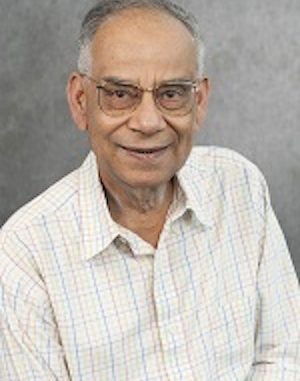
CHICAGO (TIP): Indian American Microbiologist Ananda Mohan Chakrabarty, who is most notable for his creation of a biology-based solution for cleaning up toxic spills using Burkholderia cepacia, or B. cepacian, passed away July 10 in Illinois. Chakrabarty, 82, was an Emeritus distinguished professor of microbiology and immunology at the University of Illinois College of Medicine (UIC).
Chakrabarty earned his PhD at the University of Calcutta in India in 1965 and then moved to the University of Illinois Urbana-Champaign (UIUC). After six productive years in Urbana, Chakrabarty moved to upstate New York where he introduced plasmid mediated biodegradation work to the General Electric Company, which was making its first move toward bio and environmental microbiology.
In his days as a young scientist at General Electric, Chakrabarty developed the B. cepacia bacterium in his laboratory. The bacterium has the ability to break down crude oil into simpler substances that can serve as food for aquatic life. B. cepacia was the subject of a landmark 1980 U.S. Supreme Court decision that said forms of life created in the laboratory can be patented.
In “Diamond vs. Chakrabarty,” the U.S. Supreme Court held with a five to four vote that living, man-made microorganisms are patentable. The court ruled that patents could be issued for “anything under the sun that is made by man.” Many say that Chakrabarty’s battle for patent protection paved the way for future patenting of biotechnological discovery.
In 1979, Chakrabarty moved to the University of Illinois College of Medicine, and he remained at UIC until retiring in 2018. His large and productive laboratory group of Ph.D. students, postdocs and sabbatical visitors continued work with the molecular biology of plasmid-bearing Pseudomonas capable of metabolizing man-made toxic organic agents. An area of medically important research in Chakrabarty’s lab was the biosynthesis of alginate by the human infectious Pseudomonas.
Chakrabarty’s fame as the name on the first patent for a recombinant microbe led to a second career as an expert and lecturer on legal issues of patenting and intellectual property rights of biological significance. He sat on many American and international committees and taught in workshops for American and international judges on these matters. For his achievements in genetic engineering technology, he was awarded the prestigious civilian Padma Shri by the government of India in 2007. He was for many years a global roving ambassador for UIC.





Be the first to comment